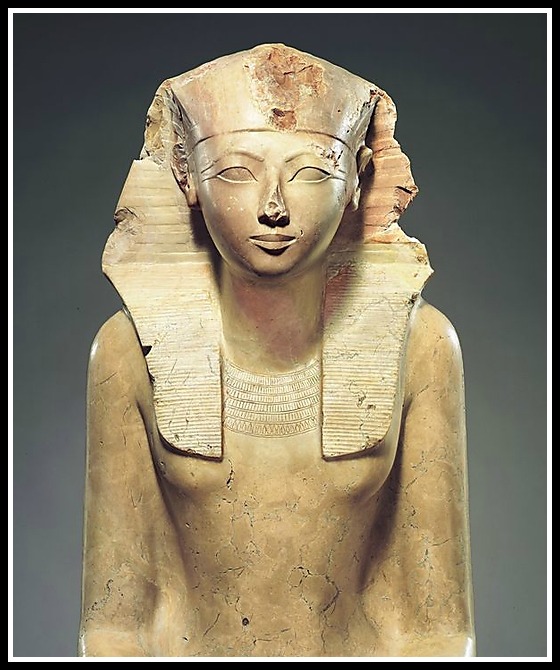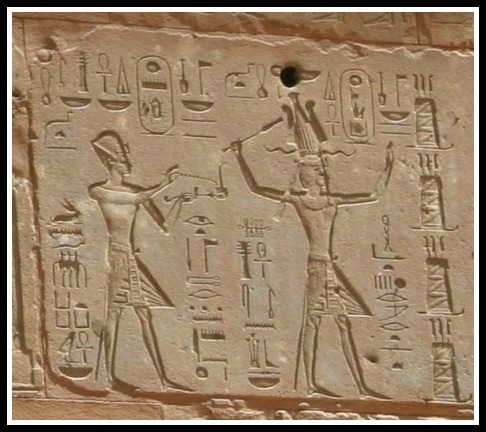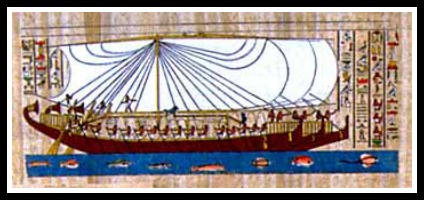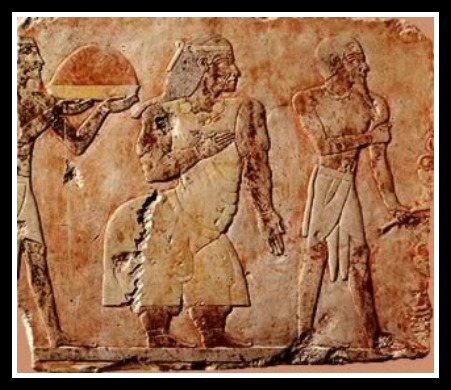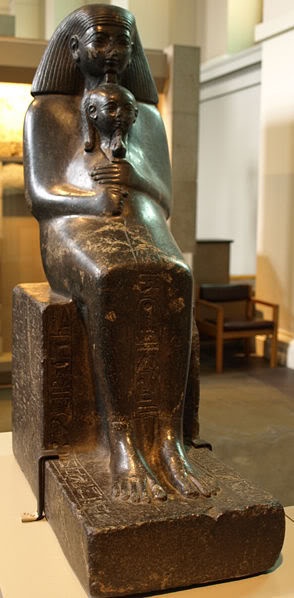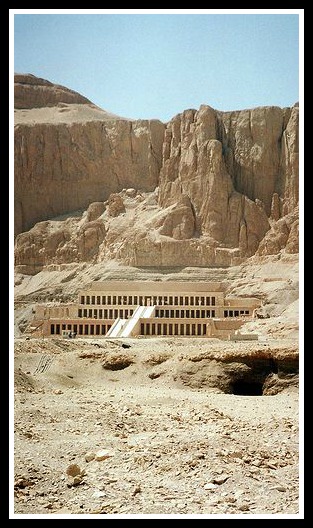Go back in time. No, farther. Farther! We are talking about a woman who only missed sharing the planet with the last of the woolly mammoths by a couple hundred years. A woman who was born an Egyptian princess, and grew to become a king: Hatshepsut.
We begin this episode with not only a disclaimer that scholars can’t agree on a lot of things that happened back in the days of Pharaohs but of Ancient Egyptian life itself. While people may, essentially, want similar things from life now as then- the culture of the times was a weeee bit different. We don’t go into too deep of an explanation- just the basics to better understand Hatshepsut’s life.

Looking at the waaay past from the present is often confusing. The Great pyramid of Giza, built about a thousand years before Hatshepsut was born, as viewed recently. (Courtesy Tripadvisor)
Born about 1508 BC, Hatshepsut was a daughter of King Thutmose I and Queen Ahmose, he a military man given a royal wife (and likely his half-sister) and the crown of a Pharaoh. Children followed from Ahmose (his Great Wife) and various lesser wives. The boys were raised as potential heirs to the throne, and the girls were raised for their future as queens. As always, we go into a lot more detail on the podcast, but the nickel tour says this: Hatshepsut and her father were close. By all accounts he closely supervised her education and took her places that a typical Queen-in-Training wouldn’t need to know or see, only a future ruler would.
At a young age Hatshepsut was married to her brother (common at the time, don’t freak out- it ensured a royal bloodline and kept out pesky in-laws) Thutmose II. When her father died, she became queen. King Thutmose II was a perfect partner for her because he let her do as much as she wanted. And she wanted. She had a daughter by him, and he had children (with concubines) including Thutmose III (creative with the names, right?). When her husband/brother died this son became king and Hatshepsut his regent.
But, ahh, Hatshepsut claimed that her father had said SHE was to be Pharaoh and the god Amun had visited her mother while she was pregnant with Hatshepsut and insisted the same. Hatshepsut, who had been doing the work, took on the uniform. There was precedent for a female Pharaoh, although the couple of times that it had happened before weren’t reigns of great success.
But none had the successes of this one. During her approximately 22 year long reign, Hatshepsut led a very prosperous Egypt to even greater power. Not necessarily by military action, but by diplomacy. She filled the fiscal coffers, engaged in trade with neighboring countries, and set out on expeditions to faraway lands. Her most successful expedition was to the Land of Punt. No one is sure exactly where this fabulous place is now, but the ships had to travel and someone knew the route.
With her longtime, er, compadre Senemut at her side (he had various roles in her life from servant to advisor to companion) she went on a building bender, including her temple, Djeser-Djseru which is fabulously sleek and contemporary looking even by today’s standards.
When she died (and oh, do we speculate how that happened) something strange happened to the long list of accomplishments and life led by this remarkable woman: she began to be chiseled out of history. Pharoah Thutmose III (you remember him, the guy who was passed over for the role 22 years ago?) may have been a little miffed at his step-mom. By the time the rest of the world uncovers (literally, it was buried in sand) her life when hieroglyphics on her temple wall can be read, her image has been chipped off of artifacts, her sarcophagus had been moved, and the obelisks that she had erected to commemorate her life are hidden.
Was it an evil plot by men to wipe her out of history because of her gender? Was it mere revenge by Thutmose III who believed that by erasing her memory in this life, she was doomed in the afterlife? Or was he trying to make HIS OWN bloodline appear deeper royal than it was to insure the succession of his son, Amenhotep II to the throne?
Her body wasn’t discovered until the early 2000’s, in Tomb KV60 . Modern technology aided in identifying her.
Everything that is known about Hatshepsut has been put together like the most difficult of puzzles because a great deal of the information about her reign was destroyed. Even now, Hatshepsut’s legacy is confused with others….
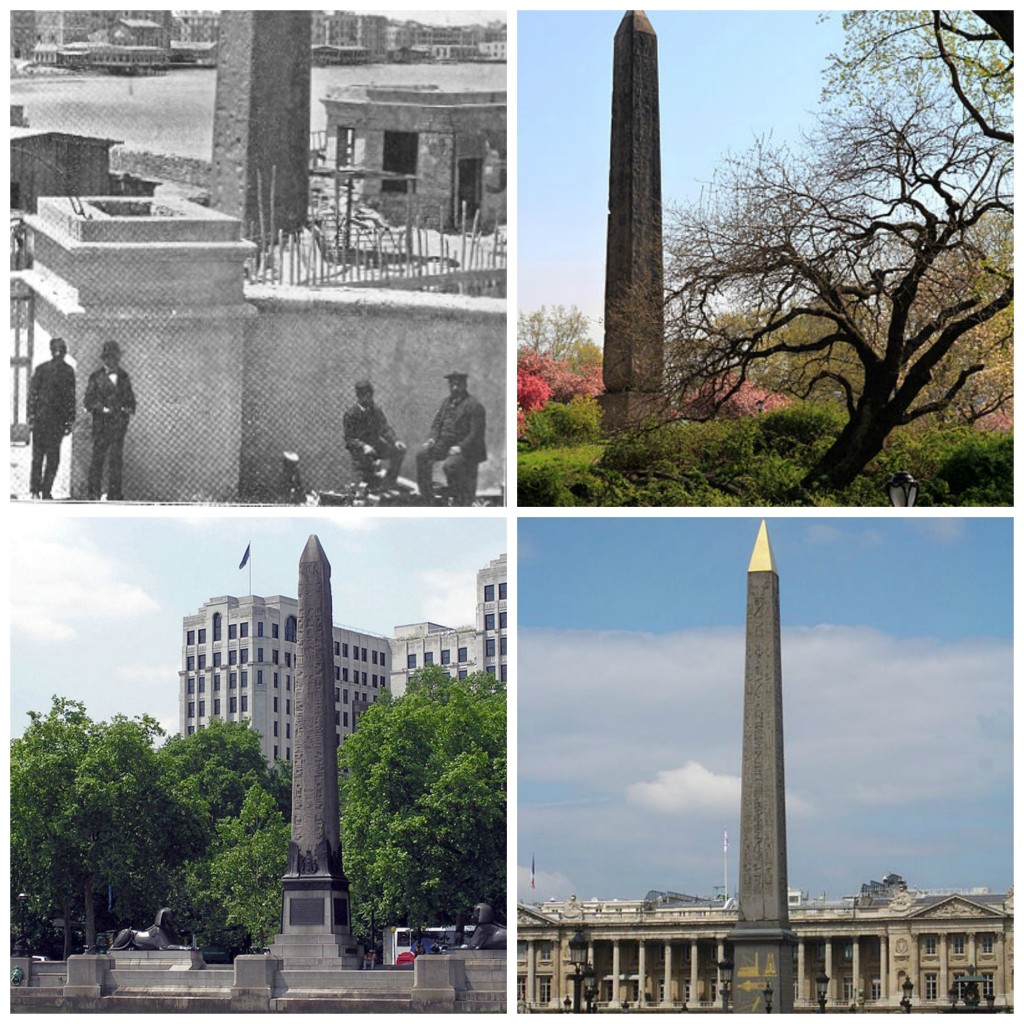
A story of some obelisks: found in Egypt and now residing in New York, London and Paris. Entitled Cleopatra’s Needles, they all pre-date Cleopatra. The pair in NYC and London are the ones Thutmose III erected as copies of Hatshepsut’s great triumphs.
Come back for our next episode where we travel forward in time over 1400 years…and find ourselves still in ancient Egypt.
Time Travel With The History Chicks
We will list any media with the next episode in our series, Cleopatra. But we wanted to leave you with two contemporary media images of Hatshepsut.
Horrible Histories as a whole Awful Egytians series!
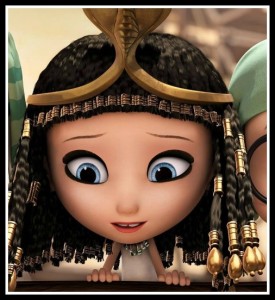
From 2014’s Mr Peabody and Sherman movie, Penny is dressed as Hatshepsut ready to marry King Tut…who wouldn’t be around for another 100 years or so after her death. Don’t get your history from Hollywood, kids.
As always, music comes courtesy of Music Alley. Visit them at music.mevio.com

